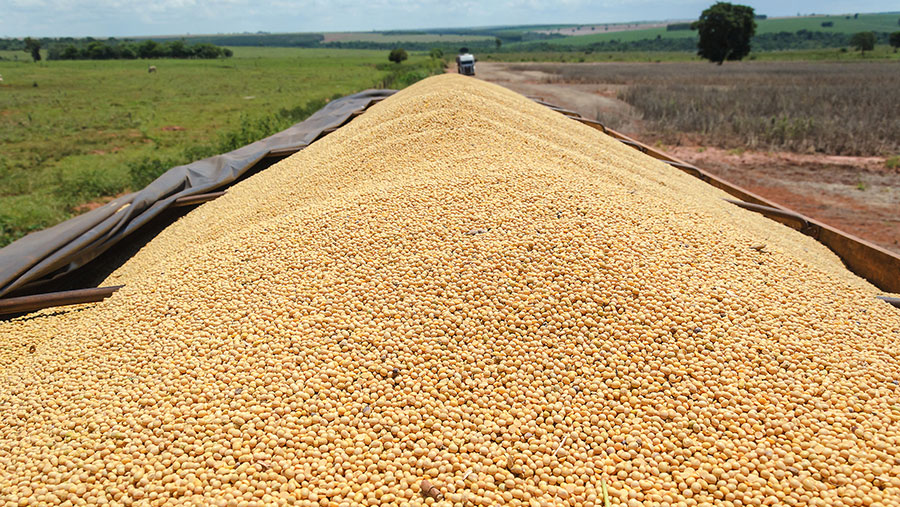Soya prices stay firm despite end to Argentina’s dock strike
 © Adobe Stock
© Adobe Stock Soya prices remain strong despite the ending of an oilseed workers’ strike in Argentina, freeing up many thousands of tonnes of supplies.
A reduction in 2020 crop and stock figures pushed futures markets higher midweek as speculators piled into the commodity, after prices had eased on news of the strike ending.
About 25-27m tonnes of soya flow out of Argentina’s ports each year. Of that, Europe buys about 17-18m tonnes to meet 40% of its annual consumption.
The 20-day dispute, which began in early December, saw 170 vessels stranded at ports without a cargo, prompting fears of a shortage in the UK. Markets reacted swiftly and Chicago Board of Trade March 2021 futures contract prices rose to a six-year high of $477/t (£386/t) over the Christmas period.
See also: Tips for maintaining farming and inheritance tax reliefs
The freeing up of supplies has come in time to avoid shortages in the UK, according to the Agricultural Industries Confederation.
Grain traders at Glencore and Cargill reported they had enough stocks to keep supplies flowing until new vessels reach UK ports.
CRM Agri Commodities analyst Peter Collier added: “While there may be a tight logistical period, with reduced stocks, there should not now be a significant shortage.”
Firm prices
While news of the strike ending saw prices ease, Mr Collier warned against expecting significant downward shifts due to increased global demand. China accounts for 60% of global soya imports and its imports rose 36% in the 12 months to 1 January 2021. The soaring import levels are due to the end of a trade-tariff war with the US.
China has been rebuilding its pig sector after the devastation caused by an African swine fever outbreak. It has also rapidly expanded its poultry sector to fill the protein void left by the shortage of pork. This suggests soya prices will stay supported, with midweek spot prices at almost £450/t delivered – about £50/t up on pre Christmas levels. The high prices have prompted concern from livestock producers, who also face higher cereal and straw prices.
National Pig Association policy services officer Lizzie Wilson said the soaring prices had put pressure on producer margins at a time when pig prices were dropping.
“Producers are already struggling with restricted cashflows due to limited numbers being slaughtered and subsequent overweight penalties.
“Added to that, both cereal and straw prices are rising, and availability of both is an issue,” said Ms Wilson.
“It’s so important that the whole of the agricultural sector supports each other and helps to promote both the NFU and AHDB campaigns aimed at backing British farmers and encouraging the public to ‘eat balanced’,” she added.
